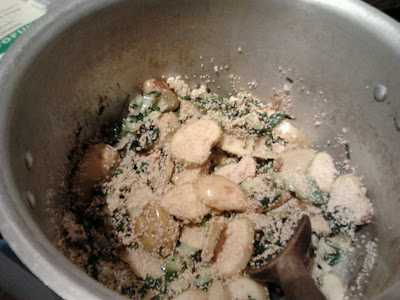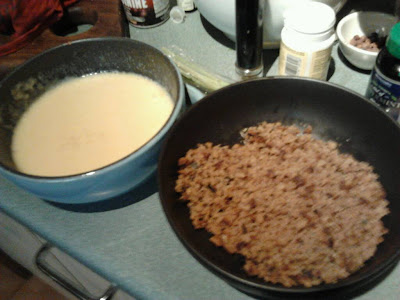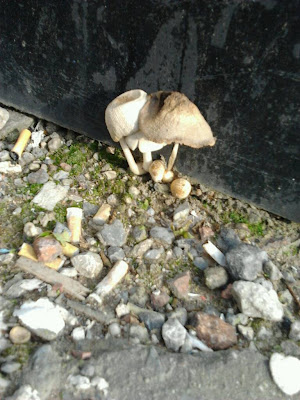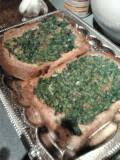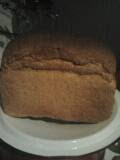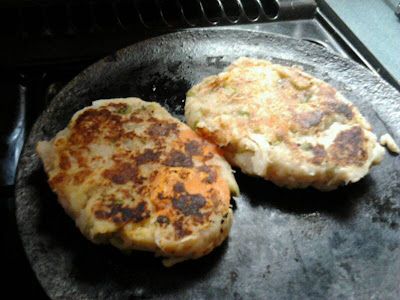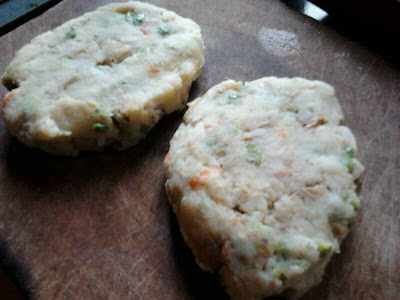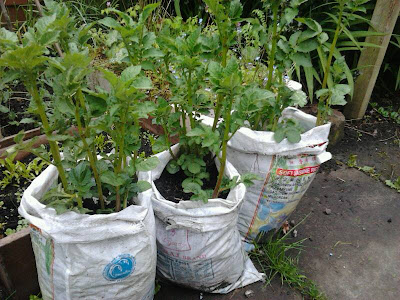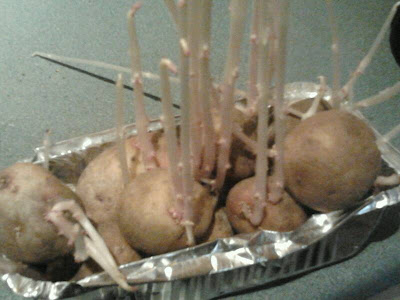' earth does not support yet all life is sustained'
Profound! He's talking about everything having its own individual nature that fits in to the individual nature of everything else, requiring no order,constraint or moulding.
But how does this link into cauliflowers? Well the humble cauli does not require much preparation to get two meals from one cauliflower, and in respect to taoist philosophy if the cauliflower presents itself as a two meal food why try and treat it as anything less?
If you are still with me, this is what I'm talking about. Most of us will discard the green leaves surrounding the cauli in the awe of its fluffy white flower. I have to ask why as they are as good as cabbage and full of flavour.
So heres the two meals I prepared:
Dish 1
"Recycled Greens soup"
1. Trim off your cauliflower greens and chop finely with an onion or scallion.
2. Sweat off your onion and greens in a big pan.
3. Slice up two medium potatoes and add to the pan.
4. I added a handful of Amaranth here too for extra protein, quinoa is equally good, but if you have neither don't worry its equally good without.
5. Stir to mix the veg and season.
6.Add about two pints of water to cover and a handful of shredded kelp seaweed either fresh or dried.
7. Cook until the potatoes are softening, and at this stage taste and adjust seasoning with either salt or pepper or miso,soy sauce or yeast extract. If at this point you want a creamier soup, you can dash in some soya milk.
8. Serve hot and enjoy.
Dish 2
"Crunchy breadcrumbed cauli florets"
This is a healthy 'no-fry' tempura inspired dish and also good for using up that stale crust thats hanging around.
1. Break up your cauliflower into individual florets and steam for about 5 mins so that they still hold their shape.
2. Grab your stale crust and break it into crumbs either by hand or using a food processor. Put crumbs aside in bowl.
3. Take about a tablespoon of fine corn meal (harina de maize) and add enough hot water to make a batter. Keep stirring whilst adding the water to prevent lumps and stop when its the consistency of custard. Season the batter and set aside.
4. Prepare a baking tray by lighty coating in oil.
5. Take your cauli florets and dip into your cornmeal batter one at a time and then dip into the breadcrumbs, and lay onto baking tray. Any left over breadcrumbs can be sprinkled on top.
6. Now bake in an oven on gas mark 6 umtil the batter has crisped up and the breadcrumbs are toasty.
We had this with a ginger dressed salad, and used a crust off some rye sourdough. The soup is for tomorrow.
Published with Blogger-droid v1.6.9

